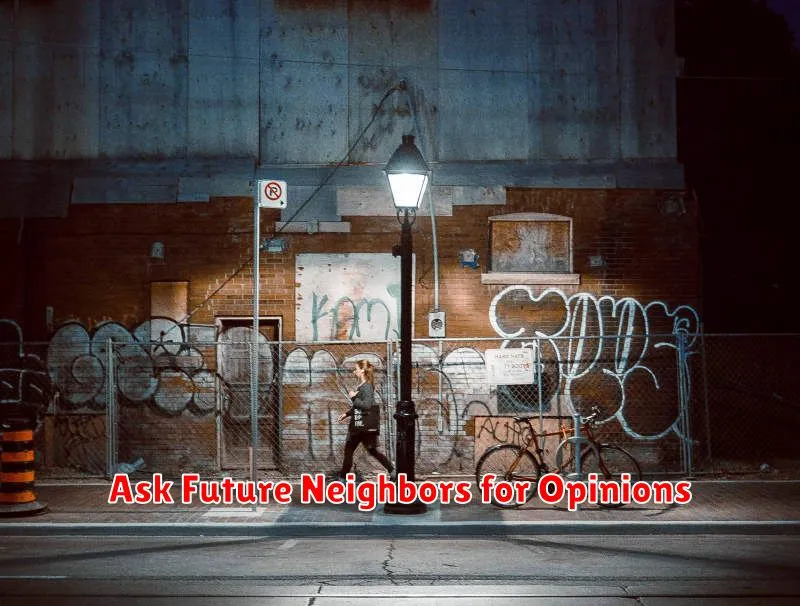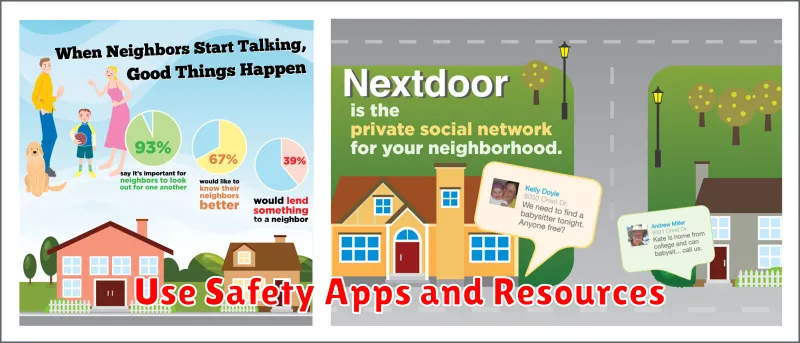Finding a safe neighborhood is a top priority when renting a new home. Whether you’re a young professional, a family with children, or a retiree, safety and security should be at the forefront of your decision-making process. This guide will provide you with practical steps and valuable resources to help you confidently identify a safe neighborhood when renting, empowering you to make an informed choice and find the perfect place to call home.
From understanding crime statistics and utilizing online resources to conducting in-person visits and engaging with potential neighbors, we’ll cover the crucial steps you should take to thoroughly assess the safety of a neighborhood before signing a lease. Learn how to evaluate factors like lighting, security measures, and community involvement, so you can find a safe and secure rental that meets your needs and provides peace of mind. Let’s explore how to navigate the rental market and find a safe neighborhood that you’ll love.
Research Local Crime Rates
Understanding local crime statistics is crucial for assessing neighborhood safety. Crime rates can vary significantly between areas, even within the same city. Researching these statistics provides valuable insights into the prevalence of different types of crime, such as theft, burglary, and violent crime.
Several resources can assist you in your research. Local police departments often publish crime statistics online. Additionally, national databases and websites compile crime data from various sources, allowing you to compare crime rates across different neighborhoods. Be sure to compare the data to city and national averages to put the numbers into perspective.
Visit the Neighborhood at Different Times
A neighborhood can feel drastically different depending on the time of day. A seemingly quiet street during the day might become bustling with activity—or deserted and unsettling—at night. Visiting at various times provides a more comprehensive understanding of the area.
Consider visiting during the morning commute to observe traffic flow and noise levels. An afternoon visit allows you to see children playing outside and get a feel for the neighborhood’s family-friendly atmosphere (or lack thereof). An evening visit is crucial for assessing street lighting, noise levels, and overall safety concerns.
Pay attention to the activity level. Is there a comfortable amount of activity, or does it feel too busy or too isolated? Note the presence of pedestrians. Do people seem comfortable walking around, or is everyone primarily in their cars?
Ask Future Neighbors for Opinions

While online resources offer valuable data, nothing beats firsthand accounts. If possible, visit the neighborhood at different times of day and speak directly to potential neighbors.
Politely introduce yourself and explain you’re considering moving to the area. Inquire about their experiences living there, focusing on safety concerns. Ask about noise levels, street lighting, and if they’ve personally experienced or witnessed any crime.
Neighborly perspectives provide a realistic picture of day-to-day life in the neighborhood, complementing your online research.
Check for Good Lighting and Sidewalks
Adequate lighting and well-maintained sidewalks are crucial aspects of a safe neighborhood. Good lighting deters crime and increases visibility at night, allowing you to feel more secure walking around. Look for streetlights that are evenly spaced and functioning correctly. Dimly lit areas can be safety hazards.
Sidewalks provide designated pedestrian walkways, separating foot traffic from vehicle traffic, thereby reducing the risk of accidents. Inspect the sidewalks for cracks, uneven surfaces, or obstructions that could pose a tripping hazard. Well-maintained sidewalks also contribute to a sense of community pride and upkeep.
Look for Nearby Schools and Services
The proximity of quality schools and essential services is a key factor in neighborhood safety and overall quality of life. Research schools in the area, considering their ratings and reputations. A strong school system often contributes to a more stable and engaged community.
Beyond schools, assess the availability of essential services. Think about the proximity of grocery stores, pharmacies, and medical facilities. Easy access to these services enhances convenience and can be crucial in emergencies.
Consider the presence of parks and recreational facilities. These amenities can foster a sense of community and provide safe spaces for families and individuals to enjoy. They often contribute to a more active and vibrant neighborhood atmosphere.
Avoid Isolated Locations
When searching for a rental, prioritize safety by steering clear of isolated areas. Isolated locations often lack the natural surveillance provided by bustling streets and nearby businesses. This can make them more vulnerable to criminal activity.
Look for neighborhoods with a visible presence of people. Areas with moderate foot traffic and active community engagement tend to deter potential threats. Consider the proximity to amenities such as grocery stores, restaurants, and public transportation. Well-lit streets and readily available public transportation options contribute significantly to a safer environment.
Review Police and Community Presence
A visible police presence can deter crime and contribute to a sense of security. Research local police departments and crime statistics for the neighborhood. Consider the frequency of patrols and response times. A strong community presence can also indicate a safer environment.
Look for active neighborhood watch programs and community events. These indicate residents who are invested in their community and its safety. Community involvement fosters a sense of responsibility and can help deter criminal activity.
Join Online Neighborhood Groups
Online neighborhood groups, often found on platforms like Facebook or Nextdoor, can provide valuable insights into a community’s safety and character. These groups offer a platform for residents to discuss local issues, share safety concerns, and offer recommendations.
By joining these groups before renting, you can gain a better understanding of the area’s day-to-day realities. Look for discussions about crime rates, neighborhood watch programs, or community events.
Remember to approach information gleaned from online groups with a discerning eye. Verify information from multiple sources and consider the potential for biases.
Ask the Landlord About Security
Directly inquiring with the landlord about security measures is crucial. Ask about lighting in common areas, the presence of security cameras, and the building’s entry system. Do they use key fobs, intercoms, or traditional locks?
Inquire about past security incidents. While landlords are not obligated to disclose everything, asking demonstrates your concern for safety. Also, ask about the landlord’s response protocol in case of an emergency.
Use Safety Apps and Resources

Technology can be a valuable tool in assessing neighborhood safety. Several apps provide crime statistics, safety ratings, and even real-time alerts. Research these apps and find ones that meet your needs. Some apps aggregate information from official sources, while others rely on user-reported incidents. Consider using a combination of resources for a more comprehensive overview.
In addition to apps, explore local government websites. Many cities publish crime data and information on community policing initiatives. These resources can provide valuable insights into specific neighborhoods and potential safety concerns.

